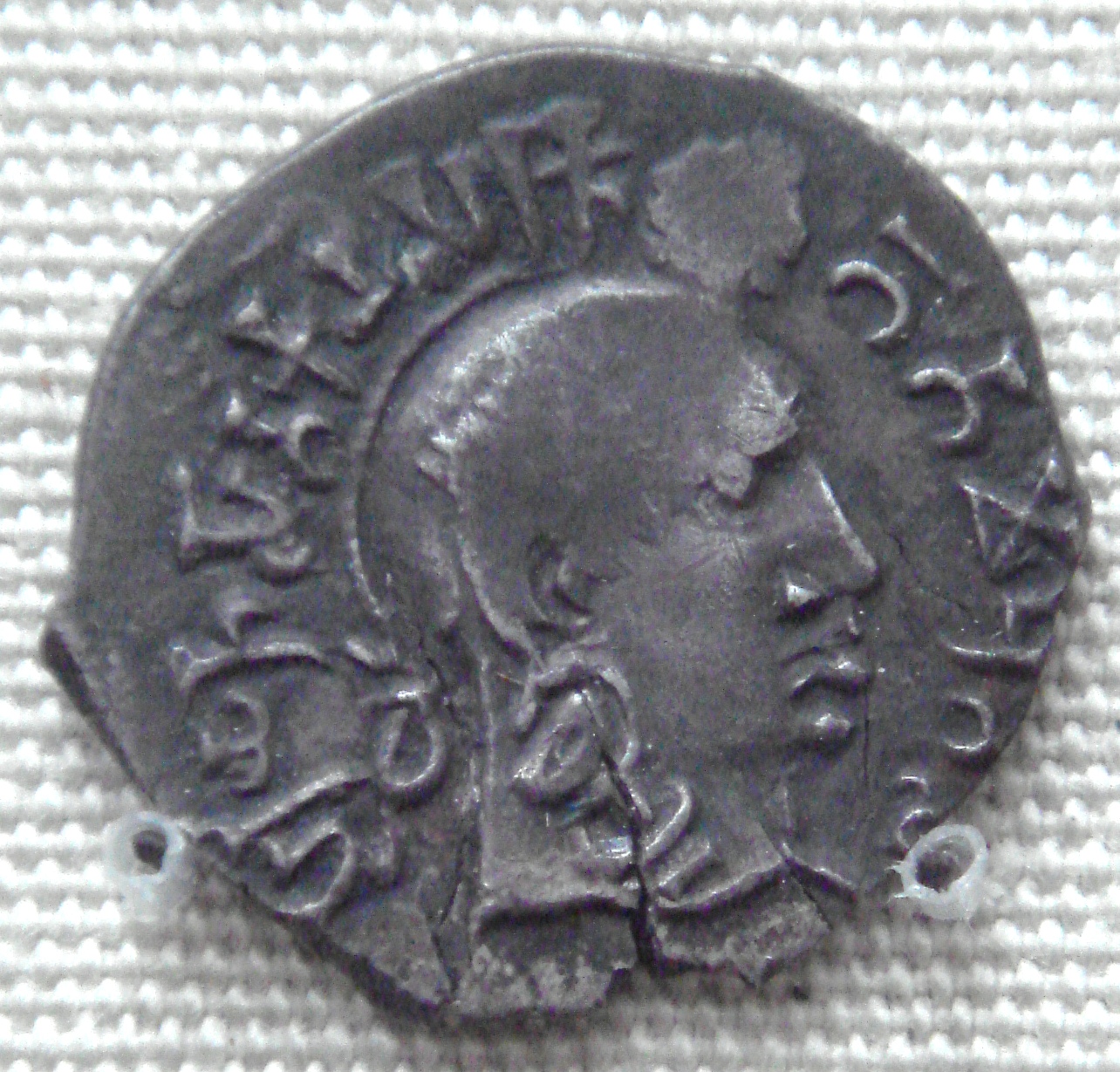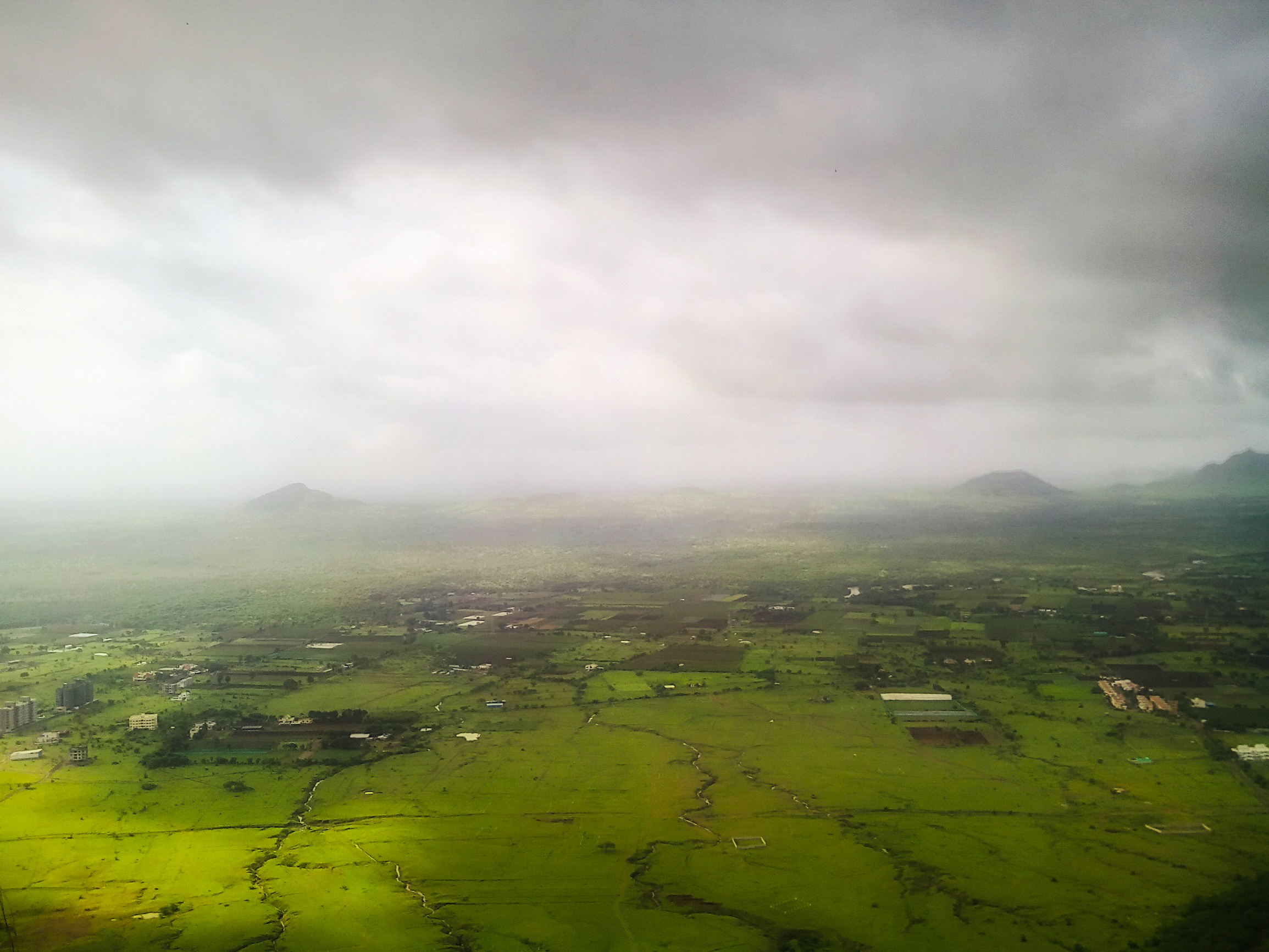|
Yajna Satakarni
Yajna Sri Satakarni (Brahmi: 𑀲𑀺𑀭𑀺 𑀬𑀜 𑀲𑀸𑀢𑀓𑀡𑀺 ''Siri Yaña Sātakaṇi''), also known as Gautamiputra Yajna Sri, was an Indian ruler of the Satavahana dynasty. He was the brother of Vashishtiputra Satakarni. His reign is dated variously: c. 152-181 CE, c. 165-195 CE, c. 170-199 CE or c. 174-203. He is considered to be the last great king of the Satavahana dynasty. He regained some of the territory lost to Shakas (the Western Satraps) under Vashishtiputra Satakarni. He defeated the Western Satraps and reconquered their southern regions in western and central India. The Satavahana started to decline after Yajna Sri Satakarni, while the Western Satraps would continue to prosper for another two centuries. Coinage File:Gautamiputra Yajna Satakarni.jpg, Coin of Gautamiputra Yajna Satakarni File:Coin of Gautamiputra Sri Yajna Satakarni.jpg, Coin of Gautamiputra Yajna Satakarni Inscriptions There are two inscriptions of Yajna Sri Satakarni at Kanhe ... [...More Info...] [...Related Items...] OR: [Wikipedia] [Google] [Baidu] |
Vashishtiputra Satakarni
Vashishtiputra Sātakarni (Brahmi: 𑀯𑀸𑀲𑀺𑀣𑀺𑀧𑀼𑀢 𑀲𑀸𑀢𑀓𑀁𑀁𑀡𑀺, ''Vāsiṭhiputa Sātakaṃṇi'') was a Satavahana king, who ruled the Deccan region in India, during the 2nd century CE. He was the brother of Yajna Sri Satakarni, his regnal successor and Vasishthiputra Pulumavi, his regnal predecessor. His reign is dated 158-165 CE. Vashishtiputra Sātakarni was in great conflict with the Scythian Western Kshatrapas in the West, but he eventually married the daughter of Rudradaman I of the Western Kshatrapas dynasty, in order to forge an alliance. The inscription relating the marriage between Rudradaman I's daughter and Vashishtiputra Satakarni appears in a cave at Kanheri: Later, however, Vashishtiputra Sātakarni was defeated by his father-in-law in battle, with serious effect on Sātavāhana power and prestige: Gallery File:Satavahanas (Andhras). Vasisthiputra Satakarni.jpg, Coin of Vasisthiputra Satakarni File:Rudradaman co ... [...More Info...] [...Related Items...] OR: [Wikipedia] [Google] [Baidu] |
Shivaskanda Satakarni
Shivaskanda Satakarni was one of the last rulers of the Satavahana dynasty in India. He succeeded Vashishtiputra Satakarni in 145 CE. His reign is dated variously: 154-161 CE, or 145-152 CE. He was defeated twice in battle by his Western Satrap The Western Satraps, or Western Kshatrapas (Brahmi:, ''Mahakṣatrapa'', "Great Satraps") were Indo-Scythian (Saka) rulers of the western and central part of India ( Saurashtra and Malwa: modern Gujarat, Maharashtra, Rajasthan and Madhya Pradesh ... enemy Rudradaman. Notes 2nd-century Indian monarchs Year of death unknown Satavahana dynasty Year of birth unknown {{India-royal-stub ... [...More Info...] [...Related Items...] OR: [Wikipedia] [Google] [Baidu] |
Matsya Purana
The ''Matsya Purana'' (IAST: Matsya Purāṇa) is one of the eighteen major Puranas (Mahapurana), and among the oldest and better preserved in the Puranic genre of Sanskrit literature in Hinduism. The text is a Vaishnavism text named after the half-human and half-fish avatar of Vishnu. However, the text has been called by the 19th-century Sanskrit scholar Horace Hayman Wilson, "although a Shaivism (Shiva-related) work, it is not exclusively so"; the text has also been referred to one that simultaneously praises various Hindu gods and goddesses. The ''Matsya Purana'' has survived into the modern era in many versions, varying in the details but almost all of the published versions have 291 chapters, except the Tamil language version, written in Grantha script, which has 172 chapters. The text is notable for providing one of earliest known definition of a Purana genre of literature. A history written with five characteristics is called a Purana, states ''Matsya Purana'', otherwise ... [...More Info...] [...Related Items...] OR: [Wikipedia] [Google] [Baidu] |
Nasik
Nashik (, Marathi: aːʃik, also called as Nasik ) is a city in the northern region of the Indian state of Maharashtra. Situated on the banks of river Godavari, Nashik is the third largest city in Maharashtra, after Mumbai and Pune. Nashik is well known for being one of the Hindu pilgrimage sites of the Kumbh Mela, which is held every 12 years. Nashik is located about 190 km north of state capital Mumbai. The city is called the "Wine Capital of India" as more than half of India's vineyards and wineries are located here. Around 90% of all Indian wine comes from the Nashik Valley. Nashik is one of the fastest-growing cities in India. It has been a major industrial center in automobile hub. The city houses companies like Exxelia, Atlas Copco, Robert Bosch GmbH, CEAT Limited, Crompton Greaves, Graphite India, ThyssenKrupp, Epcos, Everest Industries, Gabriel India, GlaxoSmithKline, Hindustan Coca-Cola, Hindustan Unilever Limited, Jindal Polyster, Jyoti Structures, Ki ... [...More Info...] [...Related Items...] OR: [Wikipedia] [Google] [Baidu] |
Gautamiputra Satakarni
Gautamiputra Satakarni (Brahmi: 𑀕𑁄𑀢𑀫𑀺𑀧𑀼𑀢 𑀲𑀸𑀢𑀓𑀡𑀺, ''Gotamiputa Sātakaṇi'', IAST: ) was a ruler of the Satavahana Empire in present-day Deccan region of India. He was mentioned as the important and greatest ruler of Satavahana Dynasty. He ruled in the 1st or 2nd century CE, although his exact period is uncertain. His reign is dated variously: 86-110 CE, c. 103-127 CE, 106-130 CE, or more recently and specifically ca. 60-85 CE. The information available about Gautamiputra Satakarni comes from his coins, the Satavahana inscriptions, and the royal genealogies in the various Puranas. The best known of these is the Nashik '' prashasti'' ( eulogy) inscription of his mother Gautami Balashri, which credits him with extensive military conquests. Historical evidence suggests that Gautamiputra revived the Satavahana power after a decline caused by Saka invasions. Ancestry Except the '' Brahmanda Purana'', all the Puranas that contain th ... [...More Info...] [...Related Items...] OR: [Wikipedia] [Google] [Baidu] |
Sri Yajna Satakarni
Yajna Sri Satakarni (Brahmi: 𑀲𑀺𑀭𑀺 𑀬𑀜 𑀲𑀸𑀢𑀓𑀡𑀺 ''Siri Yaña Sātakaṇi''), also known as Gautamiputra Yajna Sri, was an Indian ruler of the Satavahana dynasty. He was the brother of Vashishtiputra Satakarni. His reign is dated variously: c. 152-181 CE, c. 165-195 CE, c. 170-199 CE or c. 174-203. He is considered to be the last great king of the Satavahana dynasty. He regained some of the territory lost to Shakas (the Western Satraps) under Vashishtiputra Satakarni. He defeated the Western Satraps and reconquered their southern regions in western and central India. The Satavahana started to decline after Yajna Sri Satakarni, while the Western Satraps would continue to prosper for another two centuries. Coinage File:Gautamiputra Yajna Satakarni.jpg, Coin of Gautamiputra Yajna Satakarni File:Coin of Gautamiputra Sri Yajna Satakarni.jpg, Coin of Gautamiputra Yajna Satakarni Inscriptions There are two inscriptions of Yajna Sri Satakarni at Kanhe ... [...More Info...] [...Related Items...] OR: [Wikipedia] [Google] [Baidu] |
Nasik Caves
The Nasik Caves, or Trirashmi Leni (''Trirashmi'' being the name of the hills in which the caves are located, ''Leni'' being a Marathi word for caves), are a group of 23 caves carved between the 1st century BCE and the 3rd century CE, though additional sculptures were added up to about the 6th century, reflecting changes in Buddhist devotional practices.Michell, 384 The Buddhist sculptures are a significant group of early examples of Indian rock-cut architecture initially representing the Early Buddhist schools tradition. Most of the caves are viharas except for Cave 18 which is a chaitya of the 1st century BCE. The style of some of the elaborate pillars or columns, for example in caves 3 and 10, is an important example of the development of the form. The location of the caves is a holy Buddhist site and is located about 8 km south of the centre of Nashik (or Nasik), Maharashtra, India. The Pandavleni name sometimes given to the Nasik Caves has nothing to do with the ... [...More Info...] [...Related Items...] OR: [Wikipedia] [Google] [Baidu] |
Kanheri
The Kanheri Caves (''Kānherī-guhā'' aːnʱeɾiː ɡuɦaː are a group of caves and rock-cut monuments cut into a massive basalt outcrop in the forests of the Sanjay Gandhi National Park, on the former island of Salsette in the western outskirts of Mumbai, India. They contain Buddhist sculptures and relief carvings, paintings and inscriptions, dating from the 1st century CE to the 10th century CE. ''Kanheri'' comes from the Sanskrit ''Krishnagiri'', which means black mountain. The site is on a hillside, and is accessible via rock-cut steps. The cave complex comprises one hundred and nine caves. The oldest are relatively plain and unadorned, in contrast to later caves on the site, and the highly embellished Elephanta Caves of Mumbai. Each cave has a stone plinth that functioned as a bed. A congregation hall with huge stone pillars contains a stupa (a Buddhist Pagoda). Rock-cut channels above the caves fed rainwater into cisterns, which provided the complex with water. Once t ... [...More Info...] [...Related Items...] OR: [Wikipedia] [Google] [Baidu] |
Western Satraps
The Western Satraps, or Western Kshatrapas (Brahmi:, ''Mahakṣatrapa'', "Great Satraps") were Indo-Scythian (Saka) rulers of the western and central part of India ( Saurashtra and Malwa: modern Gujarat, Maharashtra, Rajasthan and Madhya Pradesh states), between 35 to 415 CE. The Western Satraps were contemporaneous with the Kushans who ruled the northern part of the Indian subcontinent, and were possibly vassals of the Kushans. They were also contemporaneous with the Satavahana ( Andhra) who ruled in Central India. They are called "Western Satraps" in modern historiography in order to differentiate them from the "Northern Satraps", who ruled in Punjab and Mathura until the 2nd century CE. The power of the Western Satraps started to decline in the 2nd century CE after the Saka rulers were defeated by the Emperor Gautamiputra Satakarni of the Satavahana dynasty. After this, the Saka kingdom revived, but was ultimately destroyed by Chandragupta II of the Gupta Empire in the 4th cen ... [...More Info...] [...Related Items...] OR: [Wikipedia] [Google] [Baidu] |
Coin Legend Yajna Sri Satakarni
A coin is a small, flat (usually depending on the country or value), round piece of metal or plastic used primarily as a medium of exchange or legal tender. They are standardized in weight, and produced in large quantities at a mint in order to facilitate trade. They are most often issued by a government. Coins often have images, numerals, or text on them. ''Obverse'' and its opposite, ''reverse'', refer to the two flat faces of coins and medals. In this usage, ''obverse'' means the front face of the object and ''reverse'' means the back face. The obverse of a coin is commonly called ''heads'', because it often depicts the head of a prominent person, and the reverse ''tails''. Coins are usually made of metal or an alloy, or sometimes of man-made materials. They are usually disc shaped. Coins, made of valuable metal, are stored in large quantities as bullion coins. Other coins are used as money in everyday transactions, circulating alongside banknotes. Usually the highest valu ... [...More Info...] [...Related Items...] OR: [Wikipedia] [Google] [Baidu] |
Shakas
The Saka (Old Persian: ; Kharoṣṭhī: ; Ancient Egyptian: , ; , old , mod. , ), Shaka (Sanskrit ( Brāhmī): , , ; Sanskrit (Devanāgarī): , ), or Sacae ( Ancient Greek: ; Latin: ) were a group of nomadic Iranian peoples who historically inhabited the northern and eastern Eurasian Steppe and the Tarim Basin. "Modern scholars have mostly used the name Saka to refer specifically to Iranians of the Eastern Steppe and Tarim Basin" "In modern scholarship the name 'Sakas' is reserved for the ancient tribes of northern and eastern Central Asia and Eastern Turkestan to distinguish them from the related Massagetae of the Aral region and the Scythians of the Pontic steppes. These tribes spoke Iranian languages, and their chief occupation was nomadic pastoralism." The Sakas were closely related to the European Scythians, and both groups formed part of the wider Scythian cultures and ultimately derived from the earlier Andronovo culture, and the Saka language formed part of th ... [...More Info...] [...Related Items...] OR: [Wikipedia] [Google] [Baidu] |






